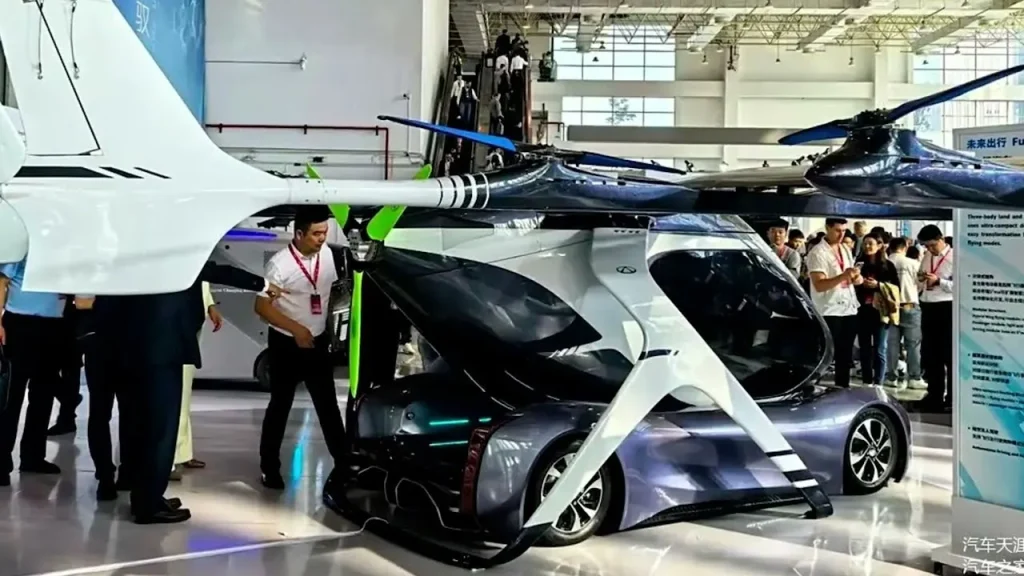Chinese automobile manufacturer Chery has made headlines with the unveiling of a prototype for an autonomous flying car at the Chery Global Innovation Conference held in Anhui, China.
This pioneering prototype, christened the ‘Land and Air Vehicle,’ eschews traditional driving instruments like steering wheels and pedals in favor of a fully autonomous driving system.

The futuristic vehicle has already showcased its capabilities by completing a successful 50-mile test flight.
This accomplishment represents a significant leap toward Chery’s objective of bolstering its stature in the global automotive industry.
The Land and Air Vehicle integrates an innovative design comprising three key components: an aircraft with hybrid wings, an intelligent cockpit, and an intelligent chassis.
These features enable the flying car to transition seamlessly between flight and land driving, making it a promising solution for urban commuters struggling with traffic congestion.
Additionally, the vehicle’s ability for vertical takeoff and landing increases its utility and adaptability in crowded environments.
Despite the excitement surrounding flying cars, including Chery’s latest development, the industry faces numerous challenges.
Numerous flying car projects have been announced, particularly from China, yet only a few have transcended the conceptual phase, with even fewer successfully tested with passengers.
As a result, widespread operational availability may still lie several years in the future.
Alongside the introduction of the Land and Air Vehicle, Chery announced the launch of its advanced all-solid-state battery series under a new brand named Kunpeng.
The Kunpeng battery line is set to debut with three types of batteries, all supporting rapid 6C charging, signaling an important step forward in battery technology.
Notably, Chery is focusing on achieving an exceptional energy density of 400 Wh/kg with its solid-state batteries by the end of this year.
Looking ahead, the company aims to increase this figure to 600 Wh/kg by 2025, paving the way for the first vehicle deployment in 2026 and initial batch production in 2027.
These advancements could transform the range of electric vehicles (EVs), potentially extending it up to an impressive 1,500 km.
The Kunpeng series offers a range of battery configurations, including square lithium iron phosphate, square ternary, and large cylindrical ternary options.
The square ternary batteries are specifically designed for EVs with ranges of 600-800 km and for plug-in hybrid electric vehicles (PHEVs) and extended-range electric vehicles (EREVs) with all-electric ranges of 150-300 km.
These advanced batteries provide an energy density range of 140-200 Wh/kg, and they can function efficiently in temperatures from -40°C to 65°C, supporting quick 2C-6C charging.
The large cylindrical series targets EVs boasting ranges of 700-1200 km and offers similar rapid charging capabilities.
This development signals the suitability of these batteries for diverse applications within the expanding new energy vehicle (NEV) market.
As Chery continues to integrate the Kunpeng batteries into its NEV offerings, the company hopes to see significant sales growth and further solidify its position in the automotive industry, particularly in the burgeoning field of electric transportation.
